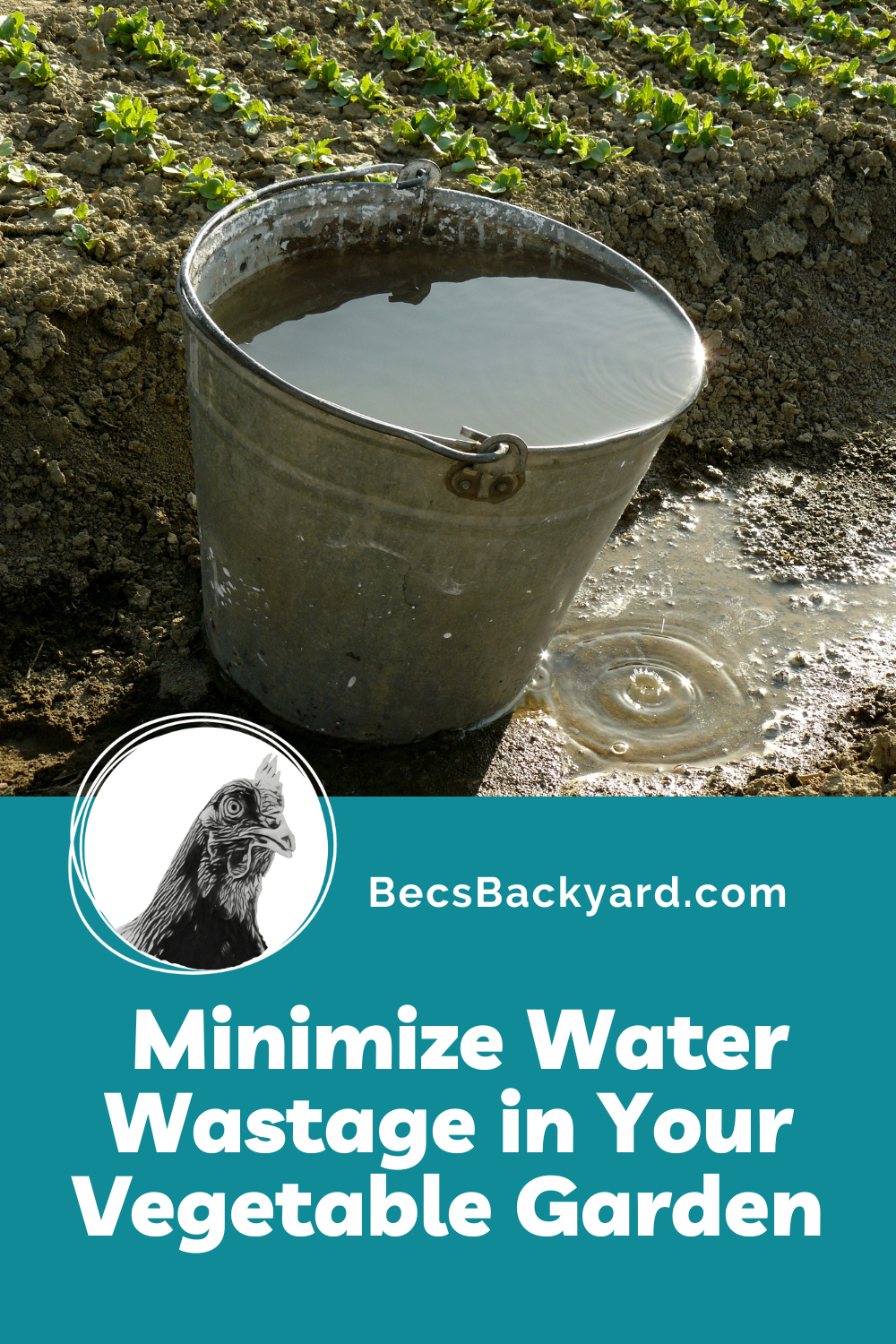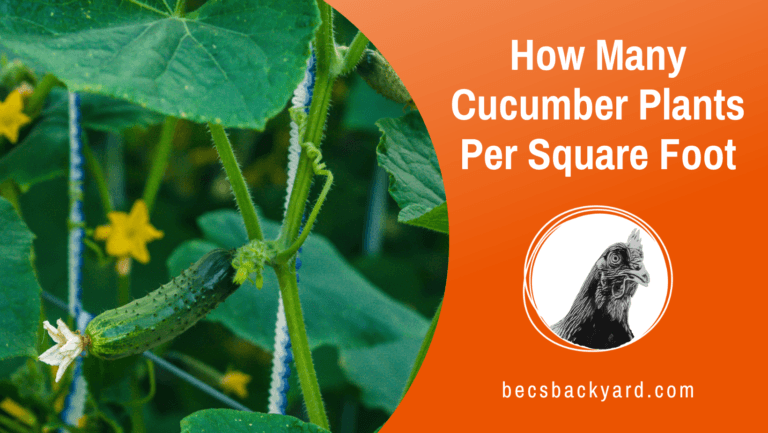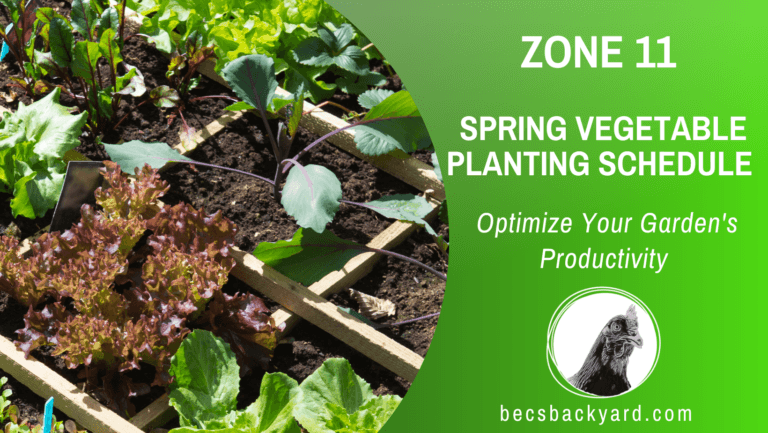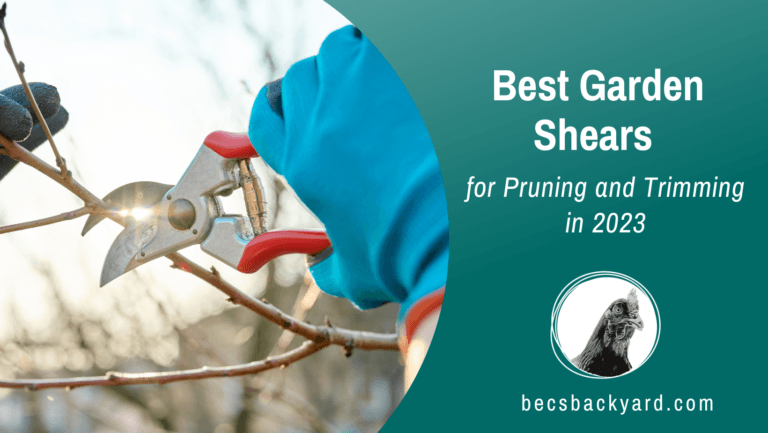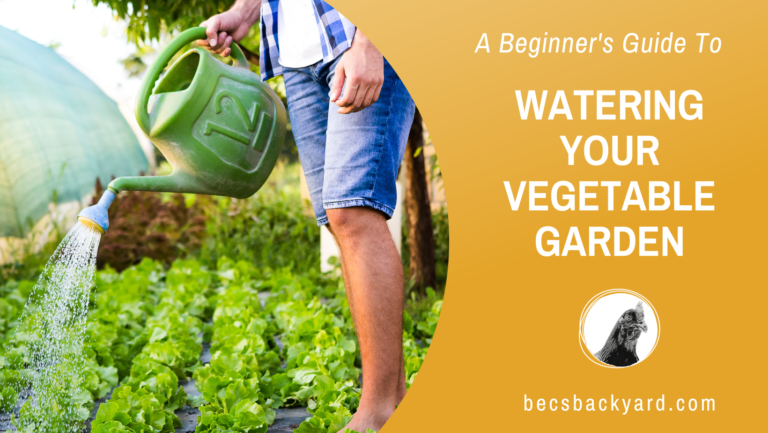Things You Can do to Minimize Water Wastage in Your Vegetable Garden: Tips and Tricks

Water is a precious resource that is vital for the growth and survival of vegetable gardens. However, water wastage is a common problem that can have a negative impact on the environment and your wallet. Fortunately, there are several ways to minimize water wastage in your vegetable garden, which can help you save money and conserve water.
One way to minimize water wastage is to add more organic matter to the soil. Studies have found that increasing the amount of organic matter by only 5% will quadruple the water holding capacity of the soil. Compost can be worked into the soil from compost piles or bagged compost. Sandy soils are prone to drying while soils with high clay content hold moisture much longer. Soils with proper amounts of organic matter will better retain moisture during drought. It may be necessary to add organic matter to your garden in the beginning of the season or after harvest each year. Another way is to inhibit evaporation by watering in the early morning or late afternoon when the sun is not as strong. By doing so, you can reduce the amount of water lost to evaporation and ensure that your plants receive the water they need to thrive.
In this article, we will explore various ways to minimize water wastage in a vegetable garden. Whether you are a seasoned gardener or just starting out, these tips and tricks can help you save water and money while growing a healthy and abundant vegetable garden.

Understanding Water Usage in a Vegetable Garden : To Help Minimize Water Wastage in Your Vegetable Garden
Water is a precious resource that is essential for the growth and development of plants in a vegetable garden. However, it is also a resource that is limited and needs to be used efficiently to minimize wastage. In this section, we will discuss how you can understand water usage in a vegetable garden to minimize wastage and ensure that your plants receive the water they need to thrive.
One of the first things you need to understand is that different plants have different water requirements. For example, leafy greens like lettuce and spinach require more water than root vegetables like carrots and potatoes. Similarly, plants that are grown in containers or raised beds require more frequent watering than those grown in the ground. By understanding the water requirements of your plants, you can water them more efficiently and avoid wastage.
Another important factor to consider is the soil type and quality. Different soil types have different water-holding capacities, which can affect how much water your plants need. For example, sandy soil drains water quickly and may require more frequent watering, while clay soil retains water for longer and may require less frequent watering. Adding organic matter like compost to the soil can improve its water-holding capacity and reduce the need for watering.
The time of day and method of watering can also affect water usage in a vegetable garden. Watering in the early morning or late evening can reduce evaporation and ensure that the water reaches the roots of the plants. Using a soaker hose or drip irrigation system can also help reduce wastage by delivering water directly to the soil around the plants.
Finally, it is important to monitor the moisture levels in your soil regularly. Overwatering can be just as harmful to plants as underwatering, and can lead to water wastage. Use a moisture meter or simply stick your finger into the soil to check for moisture levels. Only water your plants when the soil feels dry to the touch.
By understanding water usage in a vegetable garden, you can minimize wastage and ensure that your plants receive the water they need to thrive. With a little effort and attention to detail, you can create a healthy and productive garden while conserving this precious resource.
Implementing Efficient Irrigation Techniques
Drip Irrigation
Drip irrigation is a highly efficient method of watering plants in a vegetable garden. It involves using a network of tubes to deliver water directly to the roots of plants. This method minimizes water wastage by reducing evaporation and runoff. In addition, it ensures that the water is delivered exactly where it is needed, which helps to reduce weed growth and disease.
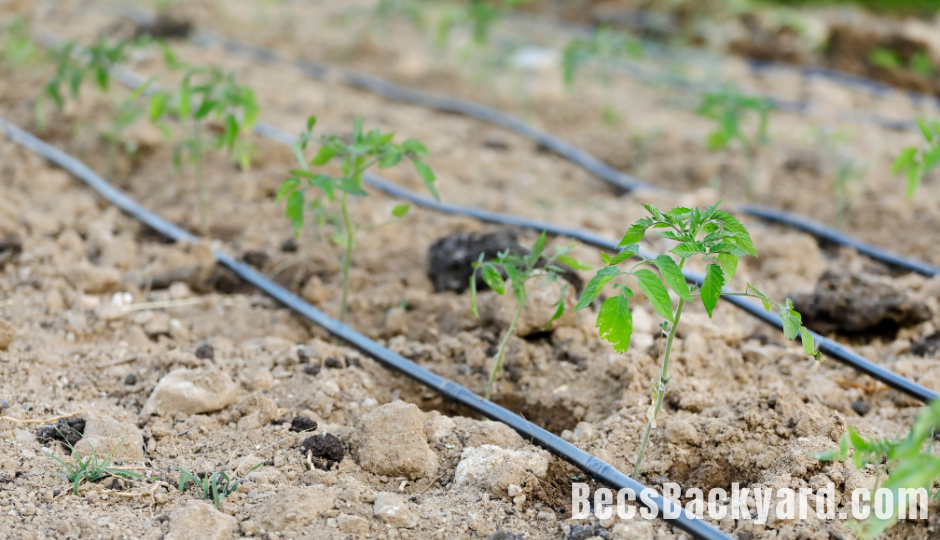
Soaker Hoses
Soaker hoses are another efficient method of watering plants in a vegetable garden. They are porous hoses that allow water to seep out slowly and directly into the soil. This method is particularly effective for plants that need deep watering, such as tomatoes and peppers. Soaker hoses also help to reduce water wastage by minimizing evaporation and runoff.
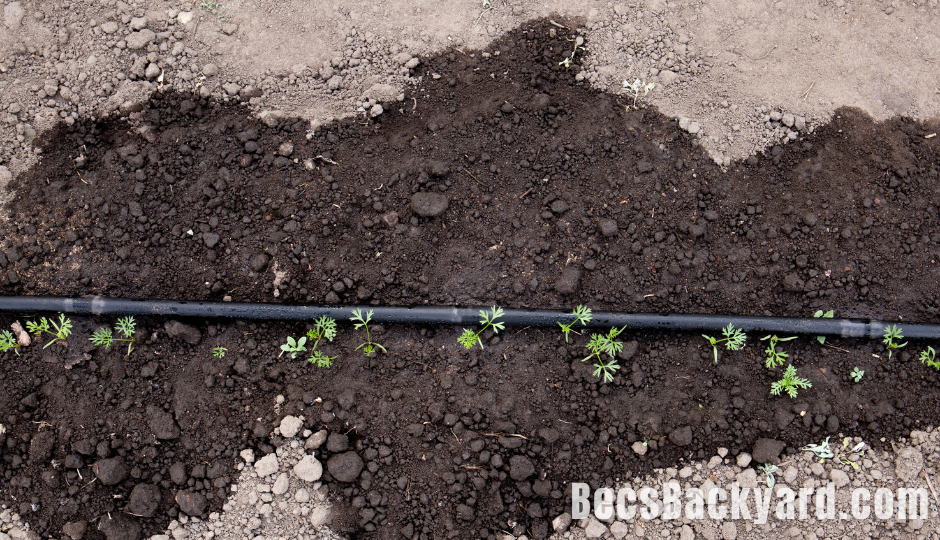
Timing and Frequency of Watering
Timing and frequency of watering are also important factors in minimizing water wastage in a vegetable garden. It is best to water early in the morning or late in the evening when the sun is not too hot. This helps to reduce evaporation and ensures that the water reaches the roots of the plants. In addition, it is important to water only when necessary. Overwatering can lead to water wastage and can also promote the growth of weeds and disease.
| Efficient Irrigation Techniques | Pros | Cons |
|---|---|---|
| Drip Irrigation | Highly efficient, reduces evaporation and runoff, delivers water directly to roots | Requires installation and maintenance |
| Soaker Hoses | Porous hoses, allows water to seep slowly and directly into soil, effective for deep watering | Can be prone to clogging |
| Timing and Frequency of Watering | Reduces evaporation, ensures water reaches roots, prevents overwatering | Requires monitoring and adjustment based on weather and plant needs |
Implementing efficient irrigation techniques in a vegetable garden can help to minimize water wastage and promote healthy plant growth. By using drip irrigation or soaker hoses, and timing and frequency of watering, gardeners can conserve water while ensuring that their plants receive the water they need to thrive.
Choosing the Right Vegetables
When it comes to minimizing water wastage in a vegetable garden, it’s important to choose the right vegetables. Here are two sub-sections that can help you choose the right vegetables for your garden:
Drought-Tolerant Vegetables
Choosing drought-tolerant vegetables is a great way to minimize water wastage in your vegetable garden. Here are some examples of drought-tolerant vegetables that you can grow:
- Tomatoes
- Peppers
- Eggplants
- Okra
- Cucumbers
- Melons
- Squash
- Sweet potatoes
- Beans
- Peas
These vegetables have deep roots that can reach down into the soil to find water. They also have leaves that are adapted to retain moisture, which helps them survive during dry periods.
Seasonal Planting
Planting vegetables during the right season can also help minimize water wastage. Here are some tips for seasonal planting:
- Plant cool-season crops, such as lettuce, spinach, and broccoli, in the fall or early spring when the weather is cooler and there is more moisture in the soil.
- Plant warm-season crops, such as tomatoes, peppers, and eggplants, in the summer when the weather is warmer and there is less moisture in the soil.
- Use mulch to help retain moisture in the soil and keep the roots of your plants cool during hot weather.
By choosing drought-tolerant vegetables and planting them during the right season, you can minimize water wastage in your vegetable garden and still enjoy a bountiful harvest.
Improving Soil Conditions
One of the most effective ways to minimize water wastage in a vegetable garden is to improve the soil conditions. By ensuring that the soil is healthy and rich in organic matter, you can help it retain moisture for longer periods of time. Here are some ways to improve soil conditions:
Mulching
Mulching is an effective way to retain moisture in the soil. By covering the soil with a layer of organic material, such as straw, leaves, or grass clippings, you can help reduce evaporation and keep the soil cool. This can also help suppress weeds, which can compete with your vegetables for water.
Composting
Adding compost to the soil can help improve its water-holding capacity. Compost is rich in organic matter, which can help the soil retain moisture. It can also help improve soil structure, making it easier for water to penetrate the soil. To add compost to your vegetable garden, you can either make your own compost or purchase it from a garden center.
Improving soil conditions is an effective way to minimize water wastage in a vegetable garden. By mulching and composting, you can help the soil retain moisture and improve its water-holding capacity.
Harvesting Rainwater
One effective way to minimize water wastage in a vegetable garden is by harvesting rainwater. By collecting and using rainwater, you can reduce your reliance on municipal water sources, which can be expensive and subject to drought-related restrictions. Here are some tips on how to harvest rainwater for your vegetable garden.

- Install a rainwater collection system: A rainwater collection system typically consists of a downspout diverter, a storage tank, and a pump. The diverter directs rainwater from your roof into the storage tank, where it can be used for watering your plants. The pump can be used to distribute the water throughout your garden.
Choose the right storage tank: When selecting a rainwater storage tank, consider factors such as size, material, and location. Choose a tank that is large enough to hold the amount of water you need, and make sure it is made of a durable material that can withstand the elements. The tank should also be placed in a location that is convenient for watering your plants.
Use a filter: It’s important to filter the rainwater before using it in your garden. A filter can remove debris and contaminants from the water, making it safe for your plants. You can use a simple mesh filter or a more advanced filtration system, depending on your needs.
Maintain your system: Regular maintenance of your rainwater collection system is important to ensure that it functions properly. Clean the tank and filter periodically to prevent buildup of debris and algae. Check the pump and other components regularly to ensure they are working correctly.
By harvesting rainwater, you can reduce your water bills and help conserve municipal water supplies. It’s a simple and effective way to minimize water wastage in your vegetable garden.
Monitoring and Adjusting Water Usage
One of the most effective ways to minimize water wastage in a vegetable garden is to monitor and adjust water usage. By doing this, you can ensure that your plants receive the right amount of water they need to grow and thrive, without wasting any water.
Here are some tips to help you monitor and adjust water usage in your vegetable garden:
- Use a rain gauge or a moisture sensor to determine the amount of water your plants receive from rainfall or irrigation. This will help you avoid overwatering your plants.
- Water your plants early in the morning or late in the evening when the temperature is cooler and the sun is not as strong. This will reduce water evaporation and ensure that your plants receive the water they need.
- Adjust the frequency and duration of your irrigation system based on the weather conditions and the moisture level of your soil. For example, if it has rained recently, you may not need to water your plants as often.
- Mulch your plants with organic materials such as leaves, straw, or compost to retain moisture in the soil and reduce water evaporation.
- Use drip irrigation or soaker hoses instead of sprinklers to deliver water directly to the roots of your plants. This will reduce water wastage and ensure that your plants receive the water they need.
By monitoring and adjusting water usage in your vegetable garden, you can conserve water and ensure that your plants grow healthy and strong.
Frequently Asked Questions
What are some effective ways to conserve water in a vegetable garden?
Adding organic matter to the soil, such as compost, can help reduce the plants’ need for water. Other effective ways include using drip irrigation, watering in the early morning or late evening, and grouping plants with similar water needs together.
Are there any specific watering techniques that can help minimize water wastage in a vegetable garden?
Yes, using a drip irrigation system can be very effective in minimizing water wastage. It delivers water directly to the roots of the plants, reducing evaporation and runoff. Mulching can also help by reducing evaporation and keeping the soil moist.
What are some alternative water sources that can be used to water a vegetable garden?
Graywater, which is water that has been used for washing dishes or clothes, can be used to water a vegetable garden. However, it should not be used on edible parts of the plants and should only be used as a temporary measure during a water shortage crisis.
How can mulching help reduce water usage in a vegetable garden?
Mulching helps to retain moisture in the soil by reducing evaporation and keeping the soil cool. It can also help to suppress weeds, which can compete with plants for water
Are there any specific types of vegetables that require less water to grow?
Yes, some vegetables require less water than others. These include tomatoes, squash, peppers, and eggplants. It’s also important to choose varieties that are well-suited to your climate and soil type.
What are some common mistakes that can lead to water wastage in a vegetable garden?
Overwatering, watering at the wrong time of day, and using sprinklers that waste water by spraying it onto non-plant areas are common mistakes that can lead to water wastage. It’s important to be mindful of how much water your plants actually need and to adjust your watering schedule accordingly.
Conclusion
Minimizing water wastage in your vegetable garden is not only good for the environment, but also for your wallet. By implementing the tips we’ve shared, you can save water and still ensure the healthy growth of your plants. Remember to monitor your soil moisture levels, choose the right irrigation system, and mulch your garden beds. With these simple steps, you can enjoy a thriving vegetable garden while doing your part to conserve water. Happy gardening!
